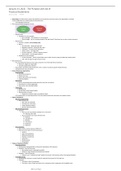Class notes
Final Notes - finance and accounting
- Course
- MOS 1023
- Institution
- University Of Western Ontario (UWO )
In depth notes for basic accounting and finance knowledge, useful for any exam. Used these notes to get a 90+. completely cumulative of the entire course. Includes M&A, options trading, distribution, Accounting information system, etc.
[Show more]



